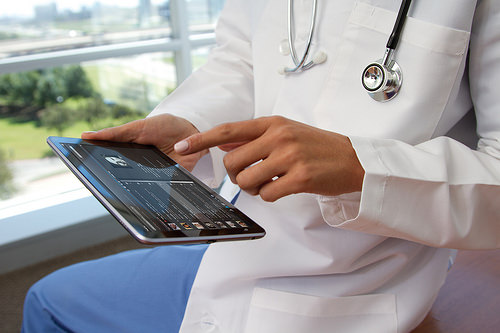Every day, the world gets a little more connected through advancements in technology. Most large hospitals are working to adopt new technologies that improve patients’ lives and increase efficiency. This has become even more imperative as people increasingly opt for virtual doctor visits over traditional appointments. Going forward, technology will continue to be important to doctors and hospital administrators.
Integrate Data
“Integrating data” is a jargon-filled term that means hospitals are more easily able to combine old data with new data, update both old and new records, and share records with other hospitals, insurance companies, and whoever else needs it. The digital transformation for healthcare systems has been advancing slowly every time a new invention comes along. Where once the fax or email reigned supreme, new document-sharing websites have taken over.
Most people who edit documents online have probably used a document-sharing website or software. Google Docs, Office Online, and Dropbox are all examples. Through these applications, people can quickly edit and share documents. Hospitals will need to take extra measures to make sure the documents are password protected to keep the records private.
See Real-Time Tracking
When a doctor updates medical records online, the change is almost automatic. When the records are stored on a document-sharing website or software, the patient’s other doctors and nurses will be able to see the changes right away. Depending on the changes, and the type of document that has been changed, these records may also offer analytic data that the hospital needs to keep track of.
Outside of keeping track of patient wellness, hospitals can also use real-time analytics to help with other areas of data management. Financials are the first thing that comes to mind. The hospital’s accountants and those who work with insurance need to keep track of which patients have paid their bills, which still need to, and if someone needs to reach out to an insurance company. When these tasks are tracked in real time, employees do not need to worry about repeating a task that another employee has already done.
Automate Administrative Tasks
Simple tasks can often be left to machines. Hospitals can take advantage of automation to improve efficiency and reduce costs. Some things that hospitals can utilize automation for include scheduling, ordering prescriptions, and sending patient email reminders.
However, hospitals should not over-automate. Instead, it’s best to automate only those tasks that do not require a human connection. Patients need to talk to a human sometimes, and they will get annoyed if they are constantly redirected to one robot after another. Hospitals, clinics, and call centers should always have an option for patients to connect with a live person.
Utilize Appointment Software
With more and more appointments being held online, it only makes sense that more appointments are being scheduled online as well. There are a variety of different scheduling software and websites that businesses can use for free or for a fee. Some scheduling applications, especially those created for large businesses, will be able to show schedules for different employees. This can help doctors know who is free in case they need to refer a patient to someone else.
Some appointment software will allow patients to schedule their own appointments. With these, patients can choose from a list of available openings for their primary care doctor. With the right software, these appointments can be made just as easily as making an appointment through a receptionist. Hospitals may also have the option to attach an email reminder for the appointment. It’s another great example of technologies integrating and working together.
These are just a few of the types of technology that hospitals have implemented in 2023 and that they are likely to continue to keep using throughout the next several years. After that, there’s no telling how much technology will continue to evolve and change to make the lives of both the hospital’s employees and patients easier.



























































